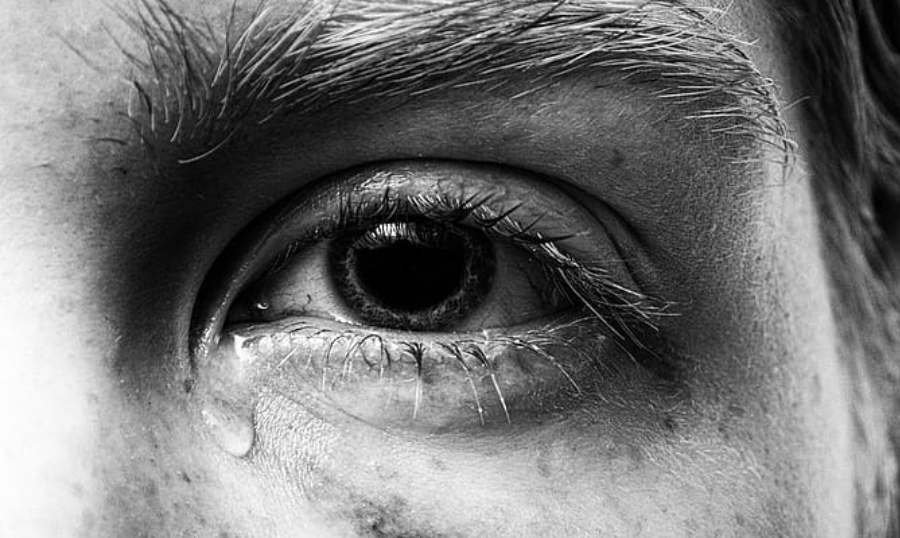Auckland Eye Holiday Season Closure
Auckland Eye will be closed for the Christmas and New Year Break from Saturday, 20 December 2025 and will reopen on Monday, 05 January 2026 at 8:00am.

Tears are our body’s way of keeping our eyes moisturised and nourished. Tears are formed in the lacrimal glands which are located above each of our eyes, and once the tears are made by these little glands, the tears travel to the eye through tiny pipes, called ducts.
Although we don’t usually notice, our lacrimal glands are constantly producing tears all the. Every time we blink, our lids work like windshield wipers to push liquid over our eyes, keeping them clean and moist. This fluid is then drained off from the eyes through more ducts. When we are upset we start producing more liquid than usual, and tears will often run down our cheeks because the draining ducts cannot keep up with removing all the extra fluid. While we are producing tears all the time, it is only when the ducts cannot drain the additional tears that we only really notice them at all.
Despite the fact that they may appear to be nothing more than salty water, our tears are actually quite complex and are made from multiple components to help maintain our eye health. To keep the eyes lubricated, tears are made of five basic components; water, electrolytes, proteins, lipids, mucins and hormones. Also, to help prevent infections, tears contain natural antibiotics called lysozymes which help to kill off bacteria and viruses on the on the surface of the eye.
To keep the surface of our eyeballs clean and moist our tears are made of three layers: mucus, water, and oil; each playing an important function:
The outer layer of the tears film is the oil or lipid based layer, which serves to seal the tear film and prevent evaporation of the tears. This lipid layer is secreted by the meibomian glands. Most patients suffering from Dry Eye have an issue with this oil layer and require treatments like LipiFlow to help remedy lipid layer problems. The middle layer is mostly comprised of water, which contains various vitamins and minerals which are essential for keeping the layer of cells on the surface of the eye healthy. Finally, to keep the eye’s surface moist and lubricated, the central mucin layer of the tear, coats the surface of the eye; helping to stick the tear layer to the eye’s surface, preventing it from evaporating away.
Many people are surprised to hear that not all tears are alike. depending on whether the tears are generated from emotions or simply for the purpose of lubricating dry eyes, the chemical composition of the different tear types actually varies. We have three types of tears which serve different purposes: reflex tears, basal tears and emotional tears.
Basal Tears
Basal tears are the constant tears that coat your eyes on a day-to-day basis are necessary for your eye health and vision. The body produces on average 1.2mL of basal tears each day , which keeps the eye constantly lubricated and helps to fight infection.
Reflex Tears
Reflex tears are another type of tear that are formed to protect your eyes and are triggered by irritants such as onions, smoke and dust. They wash away debris when it enters the eyes and are your body’s natural defence to fight bacterial infections.
Emotional Tears
Crying emotional tears is a natural human response to a range of emotions, including happiness, sadness, grief, and frustration. This type of tear starts in the cerebrum and serves as a powerful communication device, signalling to others that we are in distress. Compared to basal or reflex tears, emotional tears contain more protein-based hormones, helping to reduce hormone and chemical levels in the body during extreme emotional states (happy or sad). By doing this, emotional tears help us to return back to a calmer state which is why we usually feel better after a good cry.
Whatever the reason tears play an important role in keeping us healthy. If we couldn’t shed a tear, our eyes would become chronically dry and we’d be worse off both physically and emotionally. Not only do they provide oxygen and essential nutrients to the eye, but they also remove waste products, lubricate the eyes, flush out debris and bacteria on the eye’s exposed surface. Also shedding a tear or two when you are happy or sad helps to release stress so there is not need to lie about dirt in your eye after a sad movie anymore! Embrace your tears – it’s a normal and healthy function of being human!
If you are suffering from Dry Eye, come in for your introductory assessment at our Oasis Dry Eye Therapy Spa to receive a full clinical evaluation of the likely cause of your Dry Eye and be provided with a tailored treatment plan. Call us on 0800255393 to book!

Auckland Eye will be closed for the Christmas and New Year Break from Saturday, 20 December 2025 and will reopen on Monday, 05 January 2026 at 8:00am.

Sometimes there’s a short wait before laser eye surgery, learn why this step matters and how it helps ensure the best possible results.

Swimming can leave your eyes red and stinging. Here’s how chlorine and saltwater affect them, and what you can do to keep your vision comfortable.